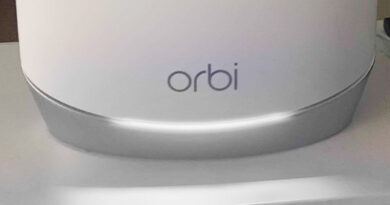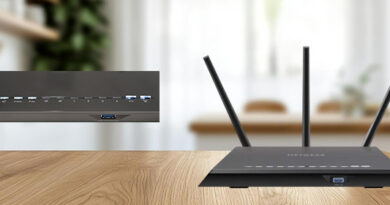Easy Steps for Installing Orbi Mesh in Your Workspace
Setting up Orbi Mesh in your workspace is easier than you think—and it’s the smartest way to fix poor connectivity once and for all.
If your team is dealing with weak signals, video calls that freeze mid-sentence, or files that take forever to upload, it’s more than just an inconvenience—it’ll hamper the productivity of your company. And the more devices you connect, the worse it gets. That unreliable signal isn’t just frustrating. It costs time, energy, and potentially money.
Here’s the good news: there’s a reliable, proven fix i-e, “Orbi Mesh WiFi” system. It gives you stable, high-speed internet throughout your entire workspace. No dead zones. No drop-offs. Just strong, seamless coverage that works.
And you don’t have to figure it out alone—we’ve done this before, and we’re walking you through every step. This is the guide that simplifies the setup and helps you get it right the first time. Reliable WiFi starts here.
Why Orbi Mesh Makes a Difference
It’s not just about getting better coverage (though you’ll definitely get that). It’s about creating a seamless, reliable internet experience across your entire workspace. The Orbi Mesh setup uses a router and one or more satellites to cover every corner.
This means uninterrupted Zoom calls, smooth file sharing, and fast loading times, whether you’re at your desk, the conference room, or the lounge. And the best part? No tech expert is required to set it up.
Step-by-Step Guide: Installing Orbi Mesh in Your Workspace
Here’s exactly how to install your Orbi Mesh Network without overcomplicating things.
Step 1: Unbox and Identify Your Devices
Your Orbi Mesh WiFi includes:
- The main router
- One or more satellites
- Power adaptors
- Ethernet Cable
Connect your router directly to the modem, and the satellites spread that signal throughout your workspace.
Set everything on a table, plug them into power. Each unit is labeled—router or satellite to avoid any confusion.
Step 2: Download the Orbi App
Download the Orbi App from App Store or Google Play store. Once installed, create or log into your account.
The app will walk you through the setup, so make sure your phone is charged and connected to temporary WiFi source.
Step 3: Connect your Router to the Modem
Now, connect the Orbi Mesh WiFi Router to your Modem via ethernet cable provided.
Once connected, plug in the router and wait until the LED ring on top pulses white—then turns solid white or blue. That’s your sign it’s ready for setup.
Step 4: Use the App to Configure the Network
Open the app and follow the on-screen instructions to begin setting up your complete Orbi Network.
The app will automatically detect your router’s connection, connect to it, and you’ll be asked to name your network and create a password.
This is the network your devices—so name it something easy to remember but not too obvious for security reasons.
Step 5: Place and Power the Satellites
Once your router is ready, place the satellites around your workspace.
To remember: Place the satellites halfway between the router and the areas with weak signals.
Plug them in and wait for the LED to turn solid blue. If it’s amber or red, move the satellite closer to the router.
(Strong, consistent connection is required for the best performance of the network.)
Step 6: Finish Up and Test the Signal
Once everything is done, the app will give you a summary of your setup. Now, you can test the coverage of the network. Now take a walk around your workspace with a laptop or phone to check the network connectivity. You’ll likely observe smoother streaming, faster downloads, and stronger connectivity right away.
If needed, you can reposition the satellites using the app’s guidance until the whole workspace is fully covered by your Orbi Mesh WiFi system.
Final Thoughts
We’re done with the setup now. Therefore, now you know, the setup is not that burdensome.
If you are the one, who has been procrastinating this task, now you know it is not. The system is quite simple to setup and even much easier with the steps provided. Therefore, whether you’re running a team of two or twenty, stable internet shouldn’t be a daily battle.
The right setup makes all the difference—and with Orbi Mesh WiFi, you’re not just upgrading your connection. You’re giving your workspace the stability and speed it deserves.
FAQs
1. Can I install Orbi Mesh without using the app?
Yes, but it’s much easier with the app. Manual installation through a web browser is possible, but it takes more time and doesn’t guide you as smoothly.
2. How many satellites do I need for my workspace?
It depends on size and layout. For small offices, one satellite may be enough. Larger or multi-floor spaces might need two or more for optimal Orbi Mesh WiFi coverage.
3. Will Orbi Mesh replace my current router?
Yes. The main Orbi router becomes your new primary router, and the satellites handle the rest of your Orbi Mesh Network.
4. What if my satellite shows a red light?
That means the signal is weak. Try moving it closer to the main router or avoid placing it near thick walls or metal objects.
5. Can I use Ethernet for the satellites?
Absolutely. If you have Ethernet ports in your workspace, you can hardwire the satellites for an even more stable Orbi Mesh Network connection.




